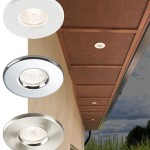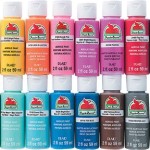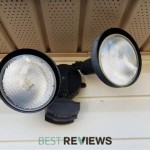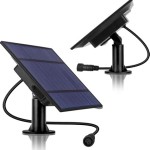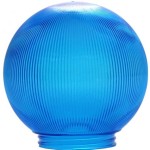How To Remove Mildew Spots From Outdoor Cushions
Outdoor cushions, designed for comfort and aesthetic appeal in outdoor living spaces, are frequently exposed to the elements. This exposure, inevitably, leads to the accumulation of dirt, debris, and, most notably, mildew. Mildew, a type of fungus, thrives in damp and humid environments, making outdoor cushions a prime breeding ground. Its presence manifests as unsightly spots, often black, gray, or white, that can detract from the cushions' appearance and, if left untreated, potentially damage the fabric. Effective mildew removal is crucial for maintaining the longevity and hygiene of outdoor cushions.
This article provides a comprehensive guide on how to remove mildew spots from outdoor cushions. It outlines several methods, ranging from simple household solutions to more specialized cleaning agents, along with the necessary precautions and steps to ensure a thorough and safe cleaning process. Proper identification of the fabric type and severity of the mildew is essential before proceeding with any cleaning method.
Identifying the Fabric and Assessing Mildew Severity
Before initiating any cleaning procedure, accurate identification of the outdoor cushion's fabric composition is paramount. This will dictate the appropriate cleaning agents and techniques that can be employed without causing damage or discoloration. Most outdoor cushions are crafted from synthetic materials like acrylic, polyester, or olefin, chosen for their durability and resistance to the elements. However, some may incorporate natural fibers such as cotton or linen, which require a more delicate approach. The care label attached to the cushion typically provides this information. If the label is missing or illegible, a small, inconspicuous area of the cushion should be tested with the chosen cleaning solution to assess its impact on the fabric's color and integrity.
The severity of the mildew infestation also needs to be evaluated. Mildew spots are usually superficial and appear as small, isolated areas of discoloration. In more severe cases, the mildew may be widespread, deeply embedded within the fabric fibers, and accompanied by a musty odor. Light infestations can often be addressed with milder cleaning solutions, while heavier infestations may necessitate a more aggressive approach, potentially requiring professional cleaning services.
Essential Cleaning Supplies and Safety Precautions
Successful mildew removal requires a collection of essential cleaning supplies. These include:
- A stiff-bristled brush: Used to loosen and scrub away mildew spores from the fabric surface.
- A vacuum cleaner with a hose attachment: Employed to remove loose debris and mildew particles before and after cleaning.
- Spray bottles: Needed for applying cleaning solutions evenly onto the affected areas.
- Cleaning solutions: Options include diluted bleach, vinegar, baking soda, or commercial mildew removers.
- Clean cloths or sponges: Used for wiping away excess cleaning solution and drying the cushions.
- Water: Necessary for rinsing the cushions after cleaning.
- Protective gear: Gloves and a mask are crucial for protecting skin and respiratory system from harsh cleaning agents and mold spores.
Prior to commencing the cleaning process, it is essential to prioritize safety. Mildew spores can trigger allergic reactions and respiratory problems in some individuals. Additionally, certain cleaning agents, particularly bleach, can be irritating to the skin and eyes. Therefore, wearing gloves and a mask is mandatory to minimize exposure. Cleaning should be performed in a well-ventilated area, preferably outdoors, to prevent the buildup of fumes and ensure adequate airflow. If using bleach, it is important to avoid contact with colored fabrics, as it can cause discoloration. Always test any cleaning solution on a small, hidden area of the cushion before applying it to the entire surface.
Cleaning Methods for Mildew Removal
Several methods can be employed to remove mildew spots from outdoor cushions, each with varying degrees of effectiveness depending on the severity of the infestation and the type of fabric.
Method 1: Vinegar Solution
Vinegar, a readily available household ingredient, possesses natural antifungal properties that make it an effective and relatively gentle cleaning agent for mildew removal. To prepare the cleaning solution, mix equal parts white vinegar and water in a spray bottle. Saturate the mildewed areas of the cushion with the solution, ensuring that the fabric is thoroughly dampened. Allow the vinegar solution to sit on the mildew spots for at least 30 minutes to allow it to penetrate and break down the mildew. After the soaking period, use a stiff-bristled brush to scrub the affected areas vigorously, loosening the mildew spores from the fabric fibers. Rinse the cushion thoroughly with clean water to remove any remaining vinegar solution. Finally, allow the cushion to air dry completely in direct sunlight. Sunlight acts as a natural disinfectant and helps to further inhibit mildew growth.
Method 2: Baking Soda Paste
Baking soda, another common household item, is a mild abrasive and deodorizer that can effectively remove mildew stains and eliminate unpleasant odors. To create a baking soda paste, mix baking soda with a small amount of water until a thick paste forms. Apply the paste liberally to the mildewed areas of the cushion, ensuring that the spots are completely covered. Allow the paste to dry completely, which may take several hours or even overnight. Once the paste is dry, use a brush or vacuum cleaner to remove the dried baking soda residue. If any mildew stains persist, repeat the process or try another cleaning method.
Method 3: Diluted Bleach Solution (Use with Caution)
Bleach is a powerful disinfectant and mildew remover, but it should be used with caution, especially on colored fabrics, as it can cause discoloration. Before using bleach, test it on a small, inconspicuous area of the cushion to ensure that it does not damage the fabric or alter its color. If the fabric is colorfast, prepare a diluted bleach solution by mixing one part bleach with ten parts water. Apply the solution to the mildewed areas using a spray bottle or sponge. Allow the solution to sit on the stains for no more than 10-15 minutes, carefully monitoring the fabric for any signs of discoloration. Rinse the cushion thoroughly with clean water to remove all traces of bleach. It is crucial to ensure that all bleach residue is removed, as it can weaken the fabric fibers over time. Dry the cushion completely in direct sunlight.
Method 4: Commercial Mildew Removers
Several commercial mildew removers are specifically formulated for use on outdoor fabrics. These products often contain stronger cleaning agents than household solutions and may be more effective at removing stubborn mildew stains. When using a commercial mildew remover, it is essential to follow the manufacturer's instructions carefully. Test the product on a small, inconspicuous area of the cushion before applying it to the entire surface, and always wear gloves and a mask to protect yourself from harmful chemicals. After applying the mildew remover, rinse the cushion thoroughly with clean water and allow it to dry completely.
Drying and Prevention
Proper drying is crucial to prevent the recurrence of mildew growth. After cleaning, ensure the cushions are completely dry before placing them back in their outdoor setting. Air drying in direct sunlight is the preferred method, as the sun's UV rays help to kill any remaining mildew spores. Alternatively, cushions can be placed in a well-ventilated area indoors. Avoid using a clothes dryer, as the high heat can damage the fabric.
Preventative measures are essential for minimizing future mildew growth. Cover outdoor cushions when not in use or during periods of rain to prevent them from becoming overly damp. Regularly clean cushions to remove dirt, debris, and potential mildew spores. Use a fabric protectant spray to create a barrier against moisture and mildew. Store cushions in a dry, well-ventilated area during the off-season. By implementing these preventative measures, the lifespan and appearance of outdoor cushions can be significantly extended.

How To Remove Mildew Stains From Outdoor Cushions

How To Remove Mildew Stains From Outdoor Cushions

How To Remove Mildew Stains From Outdoor Cushions

How To Remove Mildew From Outdoor Furniture Cushions

How To Remove Mildew Stains From Outdoor Cushions

Cleaning Mrs Hinch Fans Share How To Remove Mould From Outdoor Cushion Covers Express Co

5 Ways To Remove Mold Mildew From Outdoor Cushions Prudent Reviews

Wet Forget Outdoor Mildew Remover For Patio Furniture Life S Dirty Clean Easy

How To Remove Mildew Stains From Outdoor Cushions

Life Solution For Mildew On Outdoor Cushions
Related Posts
